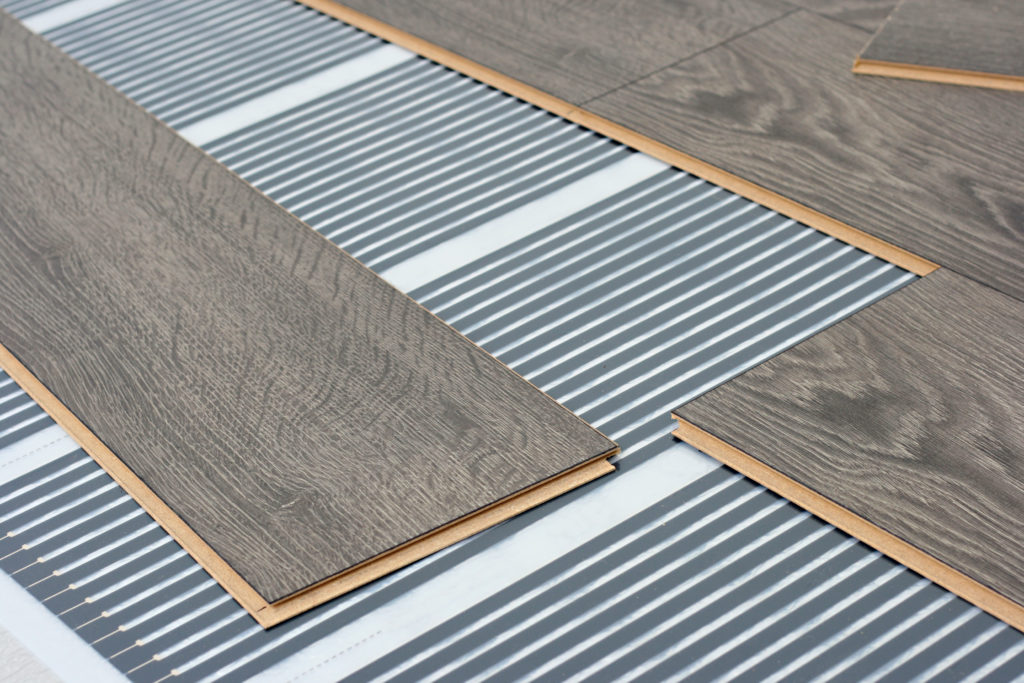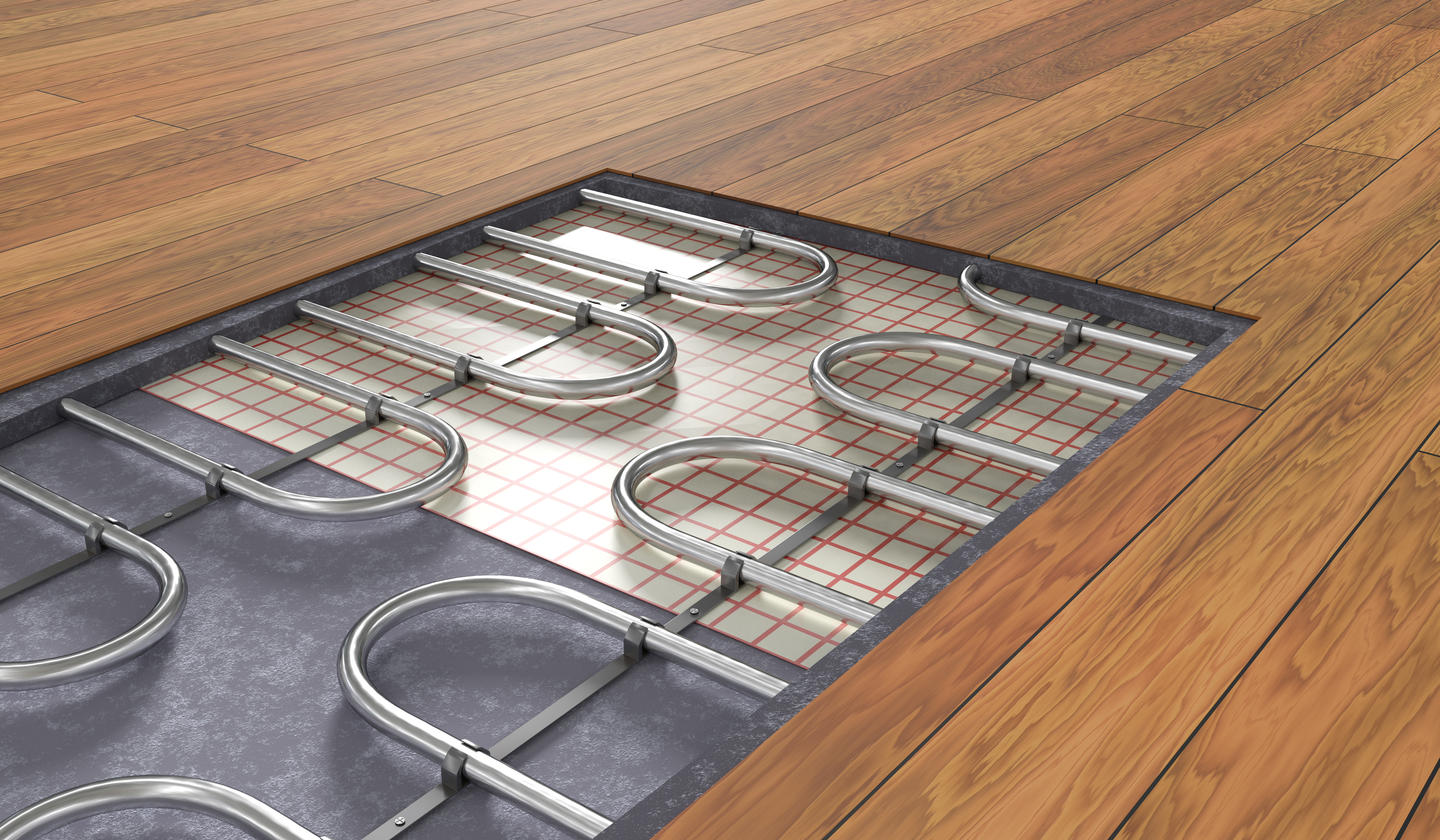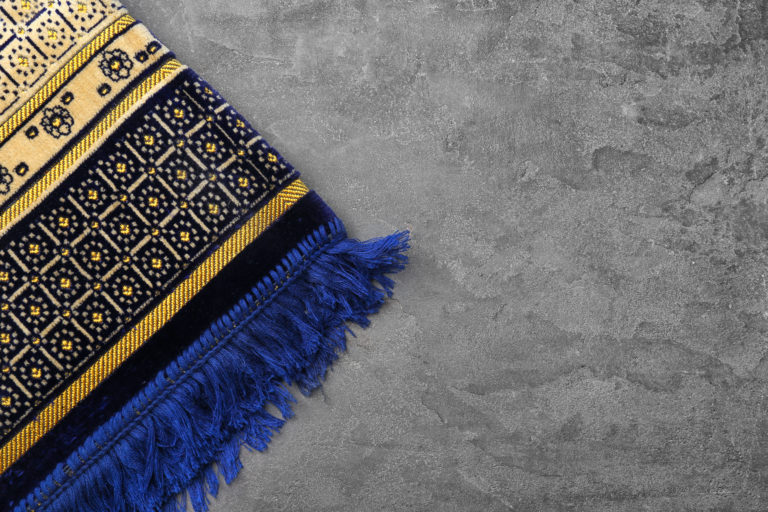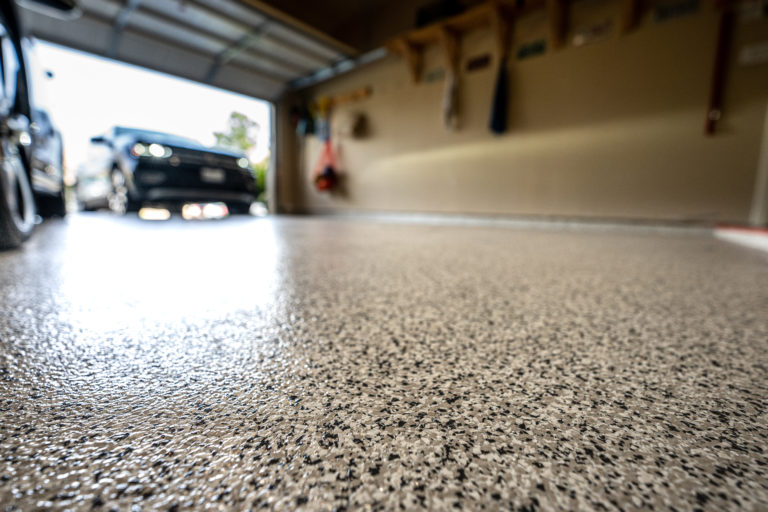This post may contain references or links to products from one or more partners of our parent company and/or subsidiaries of our parent company. For more information, visit this page.
Dec 30, 2023
Interested in heating your wood floors? We can’t blame you. If you’ve ever lived in an area with cold winters, you know that heated floors can be an amazing upgrade. Radiant floor heat is a cost-effective method of keeping your home warm and comfortable and it’s suitable for many types of wood flooring.
Wood flooring? Yes, you heard that right! Radiant floor heat isn’t just for tile or carpet—it’s also a great choice for homes with laminate and hardwood floors. You don’t have to decide on laminate vs. hardwood or carpet vs. hardwood or anything vs. hardwood to have a heated floor!
All you need to get started on your project is the basics—so read on to learn everything you need to know about heating wood floors.
Can you heat hardwood floors? Which ones?
Can you heat hardwood floors? Absolutely. But: not all wood floors can be treated—or heated—equal.
Even if you own the best hardwood floors that money can buy, there’s no guarantee they’ll be the best hardwood floors for radiant heat. Even the most durable wood flooring options aren’t always great with underfloor heating! So which wood flooring types are ideal?
The best types of wood flooring for radiant heat
First and foremost, we need to discuss the solid vs. engineered hardwood question. If you’re not familiar, solid hardwood is (no surprise) solid throughout. Engineered hardwood, on the other hand, is composed of a fiberboard or plywood core with a veneer of solid wood on top.
While the best engineered wood flooring is designed to be able to expand and contract with changes in moisture, its flexibility can actually be a downside if it’s installed over a radiant heat system. Too much heat can mean permanent swelling—and that’s going to mess up any wood floor designs you have. No bueno.
Can you still install underfloor heating below an engineered wood floor? Sure! But you do have to be a little more careful. And whatever you do, make sure you’re not heating wood floorboards over 18mm thick.
What’s the best hardwood species for heated wood floors?
According to the official magazine of the National Wood Flooring Association, you should always choose a wood species with high dimensional stability. This includes wood species like Cypress, Mesquite, Teak, Santos Mahogany, and even Black Cherry.
Species with low dimensional stability, on the other hand, should be avoided—including Beech, Maple, White Oak, and Hickory. This list includes are some of the most common types of wood flooring, which is annoying. But remember: high wood floor costs don’t equate perfect heating, so you might save some money in the long run by choosing a less-pricey (but better-heating) option!
Best Brands of 2024
Installing wood floors with an underfloor heat system
Heating your wood floor isn’t just about choosing the right types of wood flooring—it’s about choosing the right installation method as well.
If you’re installing a radiant underfloor heating system and laying your wood floor on top, you have two options: a traditional hardwood installation or a floating floor installation. You can learn how to install hardwood floors in more detail later on, but the basics break down like this:
Traditional installation means attaching your new surface to the subflooring using nails, glue, or staples (and if you just wondered “what is subflooring?”, look it up before continuing).
Floating installation, on the other hand, means installing your floor using a system of interlocking planks that snap together. This click-together flooring allows the floor to “float” above the subfloor, attached only to itself.
As you might imagine, floating floors are better for radiant heat as they have more room to expand and contract. Ironically though, there is one disadvantage of floating floors: they’re much more common with engineered hardwood than solid hardwood. And if you’re heating wood floors, solid is the better option. C’est la vie.
Can you heat laminate floors too?

What is laminate flooring? It’s one of the world’s most common hardwood floor alternatives. And while it’s sometimes thought of as fake wood flooring, it’s anything but. In fact, over the past few decades, it has become one of the most popular types of flooring in its own right. But since laminate is often made to look like hardwood (hence the “faux-wood” thing), we thought we’d include it in this guide as well.
So, can you heat laminate flooring? Absolutely! Heating laminate flooring is basically the same as heating wood flooring. But remember: like engineered hardwood, laminate has a composite core—so it’s also not quite as ideal for underflooring heating.
Additionally, you have to remember that all products are different. Some laminate flooring products can be heated, but some can’t. So if you’re weighing the pros and cons of tile vs. laminate or trying to decide between carpet vs. laminate… well, you might want to go the non-laminate route. Again, it’s all about the specific product.
But don’t worry—even if you don’t end up using laminate, products like snap-together tile flooring and peel-and-stick carpet tiles have made it easier than ever to get an inexpensive, durable floor that goes perfectly over underfloor radiant heat.
What other types of flooring can you heat?
Like we mentioned before, you can heat a lot of different types of wood flooring—but that’s just the tip of the iceberg.
Comparing bamboo flooring vs. laminate? Compare no more—both materials can be heated from below. Check out our guide to the best bamboo flooring or this list of engineered bamboo flooring pros and cons to learn why bamboo is so awesome.
Looking into the pros and cons of cork flooring? Cork can be heated with radiant heat as well, as long as the temperature doesn’t go too high (even the best cork flooring options have limits).
Which brings us to another point: you can heat lots of floors safely, as long as you choose the correct product. Cork flooring you buy specifically to withstand heat? Perfect. The cheap, prefinished cork flooring Lowes sells? Not so much.
The perks of heating wood floors
Now that we’ve gone over the practical stuff, let’s talk about the perks of heating wood flooring!
It’ll save you money
One thing you’ll find in every guide to buying hardwood floors: ways to save money. And that’s because the good stuff… well, it doesn’t always come cheap. A radiant heating system can be a creative way to offset your investment, especially if you’re buying high-quality material from any of the best hardwood floor brands around.
Look, if you’ve ever been stuck sleeping on the top bunk at summer camp, you know all too well that heat rises. Heating your wood floors will envelop your home in cozy warmth. Radiant heating enjoys an excellent reputation for being a comfortable, energy-efficient heating method. In fact, you can save anywhere from 25-50% on your heating bill by heating your wood floors!
Radiant floor heating is a good choice for allergy sufferers
Forced hot-air furnaces, wood stoves, and pellet stoves often create a lot of dust—and forced hot-air furnaces can spew pet dander, hair, and other particulates everywhere. Radiant floor heating, on the other hand, does just that—it radiates. No moving air means no dust gets blown around!
Heating your wood floors is possible even with existing floors
Well, maybe. If you have access to the underside of your subfloor—maybe from your basement—you can install radiant floor heating between the joists of your subfloor.
Just remember: radiant floor systems can be complicated to install, and may not be a good do-it-yourself flooring project for beginners. It isn’t just as simple as running out some PEX pipe and plugging it into your furnace, so make sure to get some professional help.
Heated wood floors are relatively unique
Hear us out on this one. When you say “heated floors”, people expect you to talk carpet or different types of tile. Very few people expect heated wood floors! Using radiant heat under hardwood is a fun, interesting, and unique way to add a little “oomph” to your home. Especially because there are so many types of wood flooring to choose from!
Heating wood flooring is easy—just ask the pros
If there’s one thing we hope you’ve taken from this piece, it’s that heating wood flooring is easy—if you choose the right materials and the right installation method. You don’t have to endlessly deliberate between tile vs. wood floors just to have toasty feet in the morning!
So: now that you know all about heating wood floors, it’s time to talk to someone who can actually make it happen—a flooring retailer. Use this flooring stores near me search to find one in your area! And for more info on all things flooring, check out:
- The Best Types of Vinyl Flooring Explained
- Pergo Reviews 2020: What Buyers are Saying
- How Much Does it Cost to Replace Carpet With Hardwood?
- 14 Beautiful and Affordable Outdoor Flooring Options
- How to Replace Flooring: 8 Excellent Ideas
- Linoleum vs. Laminate vs. Vinyl: Differences, Pros, & Cons
- How to Install Carpet Tiles in 7 Easy Steps
About The Author

Dr. Sara Austin
May 27, 2020
Best known for being “not that kind of doctor” and never knowing which fork to use, Sara is a learning designer and writer, former real estate agent, and builder with a penchant for home design and remodeling.






